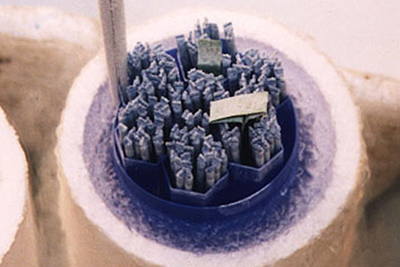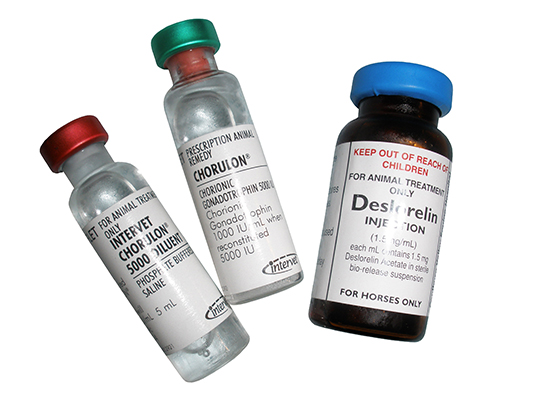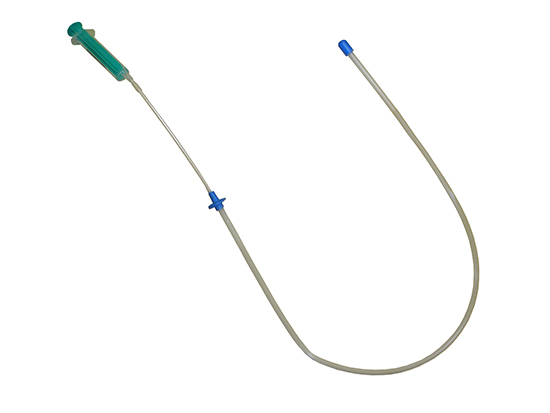 By Simon J Robinson -BVSc BScAgr MACVSc Diplomat ACT – Specialist in Equine Reproduction
By Simon J Robinson -BVSc BScAgr MACVSc Diplomat ACT – Specialist in Equine Reproduction
Historically, the insemination of mares with frozen stallion semen often resulted in disappointing results and high veterinary bills. There have been considerable advances in recent years in how stallion semen is frozen and how mares bred with frozen semen are managed in order to achieve good pregnancy rates.
As a result, it is now commonplace for frozen semen to achieve similar or better pregnancy rates as fresh or chilled semen. However, it needs to be recognised that the achievement of good fertility with frozen semen is reliant on two factors:
1. Sufficient numbers or good quality, motile sperm in the insemination dose
Good quality frozen stallion semen is certainly much more the norm these days and should be expected, if not demanded by breeders. With the increasing adoption of the use of frozen semen from competition stallions in a range of disciplines in recent years, there is much more competition between stallions, which in itself is a means of driving the quality of the semen. Furthermore, there has been a large volume of scientific research that has improved our understanding of how stallion sperm respond to freezing and thawing and has enabled us to optimise methods for freezing semen so as to maximise its fertility.
2. Appropriate management of the mares prior to insemination, at the time of insemination and post-insemination.
Breeders need to be aware that mares inseminated with frozen semen require a considerably greater intensity of veterinary management around the time of breeding compared with mares bred with chilled or fresh semen. Specifically, mares bred with frozen semen require more frequent, and a greater number of examinations in order to ensure that the semen is deposited at the appropriate time in the mare’s cycle, and additionally, usually require post-insemination treatments. In short, these requirements, which are a key factor in achieving high pregnancy rates, demand a greater commitment of both time and finances.
Frozen semen straws in liquid nitrogen
The reason for this more intense management is that not all sperm are the same. Breeders should be aware that even from the same stallion, fresh or chilled sperm are not the same as frozen-thawed sperm.
How are frozen-thawed sperm different?
We know that during the freezing and thawing processes, the sperm cells undergo significant structural and biochemical changes. Some of these changes are obvious in that they result in the death of some sperm cells and render others immobile. As such, it is normal to see a loss of viable sperm numbers during the freezing and thawing processes. However, there are also subtle changes that are only detectable with very sophisticated laboratory tests. These changes are microscopic or ultrastructural (“nano-changes”) and do not affect the motility of the sperm, yet they have the effect of reducing the fertile life of the sperm once they are thawed. So as a result of the freezing and thawing processes we are left with a population of sperm that survive υ for only a few hours in the reproductive tract of the mare (this is compared with fresh or chilled sperm which can survive for days in the mare).
So what does this mean in a practical sense?
Mares are in heat for 3 to 7 days during each cycle, and the heat culminates in ovulation where one or two eggs are released and travel down the oviduct (fallopian tube) to the site of fertilisation. When mares are either naturally served or inseminated with fresh or chilled semen, the semen is deposited in the mare and are rapidly transported to the mare’s oviduct where they essentially fall asleep and wait for the ovulated egg to arrive. It is important to recognise that regardless of the type of semen used, the process of sperm transport within the mare to the site of fertilisation is very inefficient. It is normal to inseminate 500 million sperm into the mare. Of these, less than a million make it to the oviduct, tens of thousands make it to the site of fertilisation, hundreds make it close to the egg and only one actually fertilises the egg.
As mentioned earlier, we know that the sperm that make it to the oviduct can survive in a “sleeping” state for days. So in general terms, as long as the mare is bred or inseminated every 2-3 days when she is in heat, there will always be live sperm in the oviduct ready to fertilise the egg. When the egg arrives (soon after ovulation), some of the sperm awaken and become hyperactive and proceed to fertilise the egg.
With frozen-thawed sperm however, we know that the sperm only survive for a matter of hours once they have been inseminated into the mare. Thus, timing of insemination relative to ovulation is critical. We know from a large amount of research that the pregnancy rate following insemination with frozen semen is optimal if the mare is inseminated within 6 hours before or after ovulation. Because mares have long and variable period of heat before they ovulate, it is difficult to predict when the mare will ovulate. The key objective of our more intense management of mares bred with frozen semen is to enable us to narrow the likely window of time in which the mare will ovulate to ensure that the mare is inseminated within 6 hours of ovulation. This can be achieved by:
1. Teasing the mare to ensure she is appropriately in heat – this is important as mares will not respond reliably to ovulation-induction drugs if they are not in heat.
2. Ovulation induction drugs – administering a drug to induce the mare to ovulate at a predictable time. There are two drugs that are used routinely to induce ovulation, deslorelin acetate (the drug in Ovulplant implants) or human chorionic gonadotrophin (hCG) which is sold as Chorulon.
3. Frequent scanning – after the mare has been administered the ovulation-induction drug, it is necessary for the mare to be scanned twice a day for the first day and then every 6 hours until ovulation has occurred.
Ovulation induction drugs – hCG – Chorulon and Deslorelin acetate
Some experienced veterinarians may choose to perform 2 inseminations with frozen semen at specific times following the administration of the ovulation-induction drug (“timed inseminations”). This technique may prove more convenient in that it may avoid the need for scanning and inseminating the mare late at night. However, it requires additional skill and experience on the part of the veterinarian in being able to determine if the mare is progressing as expected. It also involves utilising more than one dose of semen for each mare, which may increase the cost and obviously is a less efficient use of scarce semen.
Low-Dose Deep-Uterine Insemination
More recently veterinarians have adopted a technique termed low-dose, deep-uterine insemination with good success. The technique involves using a specialised long, flexible pipette, which is guided deep within the uterus of the mare so that the semen is deposited close to the opening of the oviduct and thus close to the site where the egg is fertilised. The benefit of this technique is that by depositing the semen closer to the oviduct, it increases the number of sperm that actually make it to the egg and thus it allows a significantly smaller number of sperm to be inseminated. The technique is also useful for poor quality frozen-thawed semen, which contains low numbers of viable sperm. By employing this technique it may be possible to split a dose of frozen semen so that half of the sperm are inseminated before and half after ovulation. This technique can prove both convenient (avoids late night scanning and insemination) and an efficient use of frozen sperm (no need for two doses per mare).
Deep uterine artificial insemination process
It is clear that frozen-thawed semen is not the same as chilled or fresh semen. Even if a stallion has an excellent fertility record with chilled semen, successful use of frozen semen will entail more time and financial commitments from breeders. However, breeders should be comforted in the knowledge that with appropriate management and selection of quality frozen semen, pregnancy rates similar to fresh or chilled semen are readily achievable.


There is so much outdated information in this article that it would be an essay to address it. When was this written?